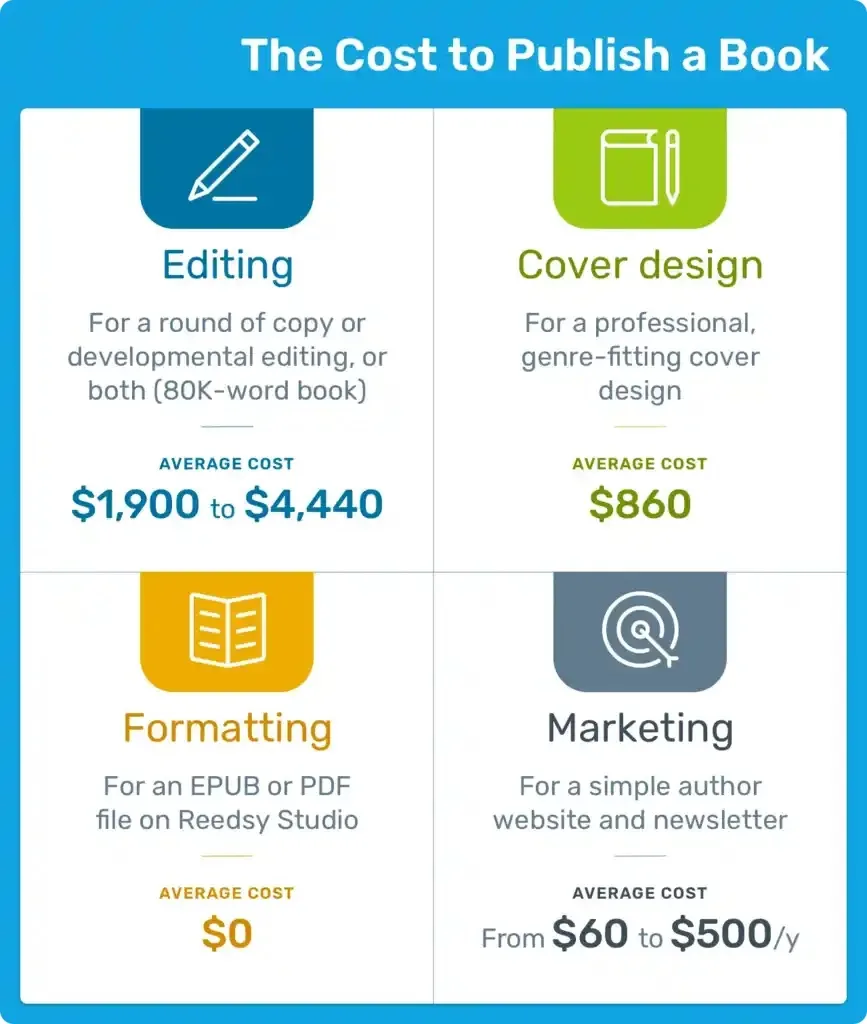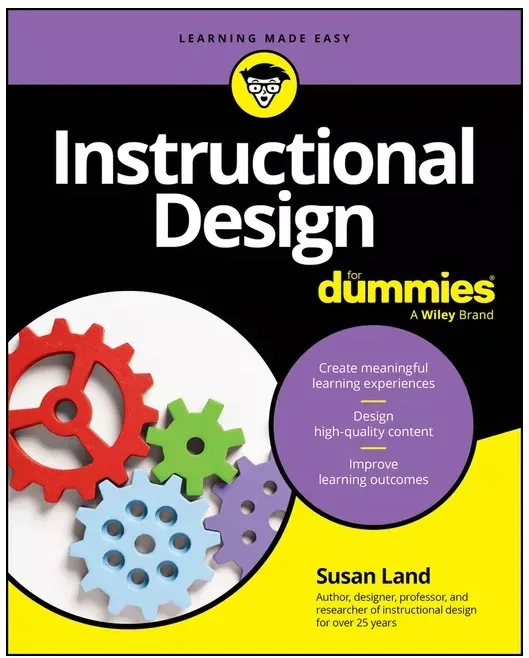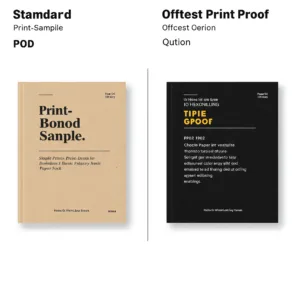As a small press, you’re navigating a world of tight margins, fierce competition, and the ever-present pressure to stand out. Every decision you make has a ripple effect, and pricing your books is no exception. It’s a puzzle that can make or break your success, influencing everything from sales and profitability to your press’s long-term survival.
Think of it this way: your book’s price is a delicate balancing act. It needs to be enticing enough to attract readers, yet high enough to cover your costs and generate a healthy profit. Striking that perfect balance is crucial, and it’s where a well-crafted pricing strategy comes into play.
Creating a reasonable book pricing strategy involves a careful balance of art and science. You need to understand your target audience, calculate your costs, assess your book’s value, and choose the right pricing model. Don’t forget to monitor your sales data and adjust your prices as needed to stay competitive.
Why is pricing so vital for small presses?
- Survival: In a crowded market, competitive pricing can be the difference between thriving and merely surviving. A strategic approach can help you capture market share and establish a loyal readership.
- Profitability: Let’s be honest, you’re in business to make a profit. The right pricing strategy ensures you’re not leaving money on the table while still offering value to your readers.
- Brand Perception: The price you set sends a message about your books and your press. A higher price can suggest quality and prestige, while a lower price might emphasize accessibility.
This guide is your roadmap to mastering the pricing puzzle. We’ll equip you with the knowledge and tools to confidently price your books, attract readers, and achieve your publishing goals. So, buckle up and get ready to unlock your book’s full potential!
Market Research: Understanding Your Readers & Competition
Before you even think about crunching numbers, you need to dive deep into the world of your readers and competitors. This is where you’ll uncover valuable insights that will shape your entire pricing strategy. Think of it as detective work – you’re gathering clues to understand what makes your target audience tick and how your book fits into the larger market.
Identifying Your Target Audience
Who are you writing for? This seems like a simple question, but it’s crucial to get specific. Are you targeting history buffs, young adult fantasy lovers, or busy professionals seeking self-improvement?
-
Define your ideal reader: Create a detailed reader persona. What are their demographics (age, gender, location, income)? What are their interests, values, and reading habits?
- For example, if you’re publishing a historical fiction novel set in 18th century England, your target audience might be older readers interested in history, period dramas, and strong female characters. On the other hand, if you’re publishing a self-help book on productivity, your audience might be younger professionals and entrepreneurs seeking practical advice.
-
Use tools to analyze your audience: Leverage tools like Book Bolt and K-lytics to analyze competitor books and gain insights into their target audiences. You can also explore other book market research tools to gather data on reader demographics, interests, and purchasing behavior. These tools can provide valuable data on reader demographics, interests, and purchasing behavior.
-
Go straight to the source: Conduct reader surveys to gather direct feedback. Ask about their preferred genres, authors, price points, and formats.
- Here are some sample survey questions:
- “What price would you be willing to pay for a [genre] ebook?”
- “What factors influence your decision to buy a book (price, author, cover, reviews)?”
- “How often do you buy books in [format]?”
- Here are some sample survey questions:
Analyzing the Competitive Landscape

Now it’s time to put on your detective hat and investigate your competition.
- Identify your competitors: Who else is writing books similar to yours? Are they self-published authors, small presses, or big publishing houses?
- Analyze their pricing: How much are they charging for their books in different formats (ebook, paperback, hardcover)? Are they offering any discounts or promotions?
- Go beyond price: Pay attention to other factors like their book covers, marketing strategies, and reader reviews. What are they doing well? Where can you differentiate yourself?
Case Study: Let’s say you’re publishing a cookbook focused on vegan baking. Analyze best-selling vegan cookbooks on Amazon. What are their price points? What kind of reviews are they getting? Are they offering any unique features like beautiful photography or step-by-step video tutorials?
Staying Ahead of Market Trends
The book market is constantly evolving, so it’s important to stay informed about the latest trends.
- Read industry reports: Organizations like the Association of American Publishers and Nielsen BookScan release reports on book sales trends, consumer behavior, and pricing. For a comprehensive overview of the current state of the industry, you can check out the latest publishing industry statistics.
- Follow book blogs and forums: Stay connected with the publishing community by reading blogs and participating in online discussions.
- Attend publishing conferences: Network with other publishers and learn from industry experts.
Example: Perhaps you’ve noticed a growing trend in translated fiction. Research the pricing strategies of successful translated titles to understand how they’re positioned in the market.
By thoroughly researching your target audience, competition, and market trends, you’ll be well-equipped to make informed pricing decisions that resonate with readers and set your book up for success.
Cost Calculation: Knowing Your Numbers
Alright, now that you have a good grasp of your market, it’s time to tackle the nitty-gritty of cost calculation. This might not be the most glamorous part of publishing, but trust me, it’s essential. Understanding your costs is like laying the foundation for a house – it needs to be solid to support everything that comes after.
Identifying All Costs Associated with Publishing
Before you can set a price, you need a clear picture of all the expenses involved in bringing your book to life. This includes everything from the initial idea to the final printed copy (or ebook file) landing in a reader’s hands.
Here’s a breakdown of potential cost categories:
- Writing and Editing: This could involve paying your author an advance, hiring freelance editors for developmental editing, copyediting, and proofreading.
- Design and Layout: Costs for cover design, interior layout, typesetting, and any illustrations or graphics.
- Printing and Binding: If you’re producing physical books, this will be a significant chunk of your expenses, as outlined in our guide to book printing costs. It includes paper costs, printing fees, and binding (learn more about different binding types in our article: 10 Types of Book Binding You Should Know About.
- Warehousing and Shipping: Storing your printed books and shipping them to retailers or directly to customers (for a deeper dive into shipping, check out our guide: Ship Books from China: The Ultimate Guide.
- Marketing and Promotion: Costs associated with advertising, public relations, social media marketing, website development, and book launch events.
- Royalty Payments: The percentage of each book sale that goes to the author.
Calculating Direct and Indirect Costs per Book

Now, let’s break down costs further:
- Direct Costs: These are directly tied to producing each individual book. Think printing, binding, and materials.
- Indirect Costs: These are not directly tied to individual books but support the overall publishing process. Think marketing, website maintenance, and office rent.
Example: Let’s say you’re publishing a 200-page paperback with a print run of 1,000 copies. Your printing cost per book is $4, and your cover design cost $500.
- Direct cost per book: $4 (printing)
- Indirect cost per book: $0.50 (cover design cost / number of books)
By meticulously tracking and categorizing your costs, you’ll gain a crystal-clear understanding of your financial landscape. This knowledge will empower you to make informed pricing decisions that ensure your books are profitable and sustainable in the long run.
Value Assessment: What’s Your Book Worth?
You’ve done your market research, you’ve crunched the numbers, and now it’s time for a crucial step: figuring out what your book is really worth. This isn’t just about recouping your costs – it’s about understanding the value you’re offering to readers and the market as a whole. Remember, a book is more than just a product; it’s a cultural artifact with potential long-term value and influence. Understanding the cultural value of books can help you appreciate the broader impact of your publishing decisions.
Assessing Content Value

Think of your book as a product. What makes it stand out from the crowd? What unique benefits does it offer to readers?
Here are some factors to consider:
- Writing quality: Is your book well-written, engaging, and free of errors? Does it have a strong voice and a compelling narrative?
- Information and insights: Does your book offer valuable information, unique insights, or a fresh perspective? Does it educate, entertain, or inspire?
- Originality: Does your book offer something new and different to the market? Does it fill a gap or address a need that other books haven’t?
- Author platform: Does your author have a strong following, a recognized expertise, or a compelling personal brand? Don’t underestimate the power of a strong author brand. In today’s crowded market, a recognizable author can be a key differentiator and justify a higher price point.
Example: A debut novel by an unknown author will likely have a different perceived value than a book by a bestselling author with a loyal fanbase. Similarly, a non-fiction book with groundbreaking research will likely command a higher price than a book that rehashes existing information.
Assessing Market Value
Now, let’s zoom out and look at the bigger picture. How does your book fit into the current market?
- Target audience size: How many potential readers are there for your book? A niche topic might have a smaller audience than a more mainstream one. For small presses, focusing on niche markets and catering to specific reader communities can be a powerful strategy.
- Purchasing power: How much are readers willing to spend on books in your genre?
- Comparable titles: How are similar books in your genre priced? What are their sales figures and reader reviews?
Case Study: Imagine you’re publishing a book on sustainable living. Research the market for similar books. Are they priced higher or lower than you anticipated? Are there any gaps in the market that your book can fill? Perhaps there’s a demand for a book that focuses specifically on sustainable living in urban environments.
By carefully considering both content value and market value, you can arrive at a price that reflects the true worth of your book. This ensures that you’re not undervaluing your work while also remaining competitive in the market.
Understanding Pricing Models
| Pricing Model | Key Factors to Consider | Pros | Cons |
|---|---|---|---|
| Cost-Plus Pricing | Total cost per book, desired markup percentage | Simple calculation, ensures cost coverage and profit | Doesn’t consider market value or competitor pricing, may lead to overpricing or underpricing |
| Competitive Pricing | Competitor book prices, unique features for higher pricing | Stays competitive in the market, avoids pricing out | Can lead to price wars, might not reflect true book value |
| Value-Based Pricing | Perceived value to readers, unique features, author platform | Can lead to higher profit margins if value is effectively communicated | Challenging to determine perceived value, might not suit all genres |
| Price Skimming | Initial high price, gradual reduction over time | Generates higher initial revenue, creates exclusivity | May deter price-sensitive readers, negative feedback if price drops too quickly |
| Penetration Pricing | Low initial price to attract wider audience | Increases visibility, attracts price-sensitive readers | Can lead to lower profit margins, might create perception of lower quality |
| Psychological Pricing | Attractive price points like $9.99 instead of $10 | Appeals to consumer psychology | Marginal impact on profit |
| Bundle Pricing | Offering discounts for multiple books together | Encourages bulk purchases, increases sales | Complexity in managing inventory and pricing |
Now that you’ve laid the groundwork, it’s time to explore the different pricing models at your disposal. Think of these models as tools in your pricing toolbox. Each one has its own strengths and weaknesses, and the key is to choose the right tool for the job. But remember, pricing isn’t a one-time decision. It’s an ongoing process of evaluation and adjustment.
Cost-Plus Pricing
This is the most straightforward pricing model. You simply calculate your total cost per book (including direct and indirect costs) and add a markup to arrive at your selling price.
-
Calculating markup: The markup percentage is the amount you add to your cost to determine your profit margin. For example, if your cost per book is $10 and you want a 50% markup, your selling price would be $15.
-
Pros: Simple to calculate, ensures you cover your costs and make a profit.
-
Cons: Doesn’t consider market value or competitor pricing, might lead to overpricing or underpricing.
-
Suitable scenarios: Good for beginners or when you have a very clear understanding of your costs and desired profit margin.
Example: Let’s say you’re publishing a photography book with stunning visuals and high production quality. Your total cost per book is $20. Using cost-plus pricing with a 40% markup, your selling price would be $28.
Competitive Pricing
This model involves setting your prices based on what your competitors are charging for similar books.
-
Analyze competitor pricing: Research the prices of comparable books in your genre, format, and target audience.
-
Find differentiation points: If you want to price higher than your competitors, make sure you can justify it with unique features, higher quality, or a stronger author platform.
-
Pros: Helps you stay competitive in the market, avoids pricing yourself out.
-
Cons: Can lead to price wars, might not reflect the true value of your book.
-
Suitable scenarios: Useful when you’re entering a crowded market or when price is a major factor for your target audience.
Case Study: A small press published a cookbook in a competitive market. They analyzed competitor pricing and found that most similar cookbooks were priced between $15 and $20. To stand out, they decided to price their cookbook at $22 but included unique features like beautiful photography, step-by-step instructions, and a focus on locally sourced ingredients.
Value-Based Pricing
This model focuses on the perceived value of your book to readers. You set your price based on the benefits your book offers, such as entertainment, information, or personal growth.
-
Communicate value: Clearly articulate the benefits of your book to readers. Highlight its unique features, author expertise, and positive reviews.
-
Pros: Can lead to higher profit margins if you effectively communicate value.
-
Cons: Can be challenging to determine the perceived value, might not be suitable for all genres.
-
Suitable scenarios: Works well for books with strong author platforms, unique content, or high production quality.
Example: A limited-edition poetry collection with beautiful illustrations and a foreword by a renowned poet could command a higher price due to its perceived value and collectability.
Price Skimming
This strategy involves setting a high initial price for your book and then gradually lowering it over time.
-
Target early adopters: Appeal to readers who are willing to pay a premium for new releases or exclusive content.
-
Pros: Can generate higher initial revenue, creates a sense of exclusivity.
-
Cons: Might deter price-sensitive readers, can lead to negative feedback if the price drops too quickly.
-
Suitable scenarios: Often used for highly anticipated books, limited editions, or books with a strong pre-order campaign.
Example: A sci-fi novel with high production value, a built-in fanbase, and a limited-edition hardcover release could utilize price skimming.
Penetration Pricing
This strategy involves setting a low initial price to attract a wider audience and gain market share.
-
Build momentum: Encourage sales and reviews early on to gain traction in the market.
-
Pros: Can increase visibility and attract price-sensitive readers.
-
Cons: Can lead to lower profit margins, might create a perception of lower quality.
-
Suitable scenarios: Often used for debut novels, books in competitive genres, or when building an author platform.
Example: A new author launching their first thriller might use penetration pricing to gain visibility and attract readers.
Other Pricing Strategies
- Psychological pricing: Using price points that appear more attractive to consumers, such as $9.99 instead of $10.
- Bundle pricing: Offering discounts for buying multiple books together, such as a series bundle or a collection of books by the same author.
Example: A romance author could bundle their latest novel with a related novella at a discounted price.
By understanding the different pricing models and their applications, you can choose the best strategy for your book and your publishing goals.
Creating Your Pricing Strategy

Now that you’ve explored the different pricing models, it’s time to put that knowledge into action and create a pricing strategy tailored to your book. This is where you’ll bring together all the pieces of the puzzle – your market research, cost calculations, value assessment, and chosen pricing model – to arrive at the perfect price point.
Don’t forget to consider the long-term implications of your pricing decisions. A well-priced book can contribute to your press’s reputation and even have a positive impact on society.
Choosing the Right Model
There’s no one-size-fits-all answer when it comes to choosing a pricing model. The best approach depends on a variety of factors, including:
- Your goals: Are you aiming for maximum profit, wider reach, or building a loyal fanbase?
- Your target audience: Are your readers price-sensitive or willing to pay a premium for quality?
- Your book’s genre and format: Are you publishing a mass-market paperback or a limited-edition hardcover?
- Your competition: How are your competitors pricing their books?
Example: A flowchart can be a helpful tool for visualizing the decision-making process. You could create a flowchart with different branches based on factors like genre, author platform, and production costs, leading to different pricing model recommendations.
Setting Initial Prices
Once you’ve chosen your pricing model, it’s time to set your initial prices. Remember, these prices aren’t set in stone. You can (and should) adjust them over time based on market feedback and sales data.
Here are some things to consider when setting initial prices:
- Format: Ebooks are typically priced lower than print books due to lower production costs. Hardcovers are usually priced higher than paperbacks due to their perceived value and higher production costs. (learn more about the differences between these formats in our article Hardcover vs Softcover Books: Which Should YOU Choose?.
- Length: Longer books generally command higher prices due to the increased content and production costs.
- Target audience: Consider the purchasing power of your target audience. A book aimed at young adults might be priced lower than a book aimed at professionals.
- Sales channels: You might want to set different prices for different sales channels. For example, you might offer a lower price on your website to encourage direct sales.
Example: Let’s say you’re publishing a thriller novel. You might set the following initial prices:
- Ebook: $4.99
- Paperback: $14.99
- Hardcover: $24.99
Planning for Price Adjustments
It’s important to be flexible with your pricing and be prepared to adjust your prices as needed.
- Promotions and discounts: Offer discounts for pre-orders, bulk orders, or during special promotions.
- Sales and seasonal pricing: Consider lowering prices during sales events or holidays.
- Price increases: If your book is selling well and demand is high, you might consider gradually increasing the price.
Example: You could create a pricing calendar that outlines planned price adjustments throughout the year, such as discounts during the holiday season or price increases after a successful book launch.
Tailored Advice for Small Presses

Small presses often face unique challenges when it comes to pricing. Here are some tips to help you navigate the pricing landscape:
-
Emphasize differentiation: Highlight what makes your books unique and valuable. This could be anything from high-quality production to a strong author platform or a focus on niche topics.
- Example: A small press specializing in local history books with unique archival content can justify higher prices by emphasizing the rarity and value of their content.
-
Combine multiple strategies: Don’t be afraid to experiment with different pricing models and strategies. You might use value-based pricing for a special edition while using competitive pricing for the standard edition.
- Example: Offer a limited-edition hardcover with special features at a premium price, while also offering a more affordable paperback edition.
-
Prioritize reader communication: Engage with your readers and get their feedback on pricing. This can help you understand their price sensitivity and adjust your strategy accordingly.
- Example: Use social media polls or surveys to ask readers about their preferred price points for different formats or genres.
By following these tips, you can create a pricing strategy that maximizes your book’s potential and helps you achieve your publishing goals.
Adapting to Market Feedback
The publishing world is dynamic, and your pricing strategy needs to be just as adaptable. Think of it as a dance – you need to be responsive to your partner (the market) and adjust your steps accordingly. This means being attentive to market feedback, recognizing when adjustments are needed, and implementing those changes strategically.
Recognizing When to Adjust Prices
How do you know when it’s time for a price change? Here are some telltale signs:
- Low sales: If your book isn’t selling as well as you expected, it might be a sign that your price is too high.
- Competitor price changes: If your competitors are lowering their prices, you might need to adjust your prices to remain competitive.
- Market shifts: Changes in the economy, consumer behavior, or publishing trends can all impact your pricing strategy.
- Negative reader feedback: If readers are complaining about the price of your book, it might be time to reconsider your pricing.
Example: Let’s say you’re selling a non-fiction ebook for $9.99, but your sales are stagnant. You notice that several competing ebooks on similar topics are priced around $4.99. This might be a sign that your price is too high and is deterring potential readers.
Implementing Price Adjustments
Once you’ve decided to adjust your price, there are a few different approaches you can take:
-
Gradual adjustments: If you’re making a significant price change, consider doing it gradually over time. This can help to avoid shocking your readers and can give you time to gauge their reaction.
- Example: If you want to increase the price of your ebook from $4.99 to $7.99, you could raise it to $5.99 first and then to $6.99 before reaching the final price.
-
One-time adjustments: For smaller price adjustments or time-sensitive promotions, a one-time change might be more appropriate.
- Example: If you’re running a limited-time sale, you could temporarily lower the price of your book by 20%.
Avoiding the Pitfalls of Frequent Price Changes
While it’s important to be flexible with your pricing, avoid making frequent or drastic price changes. This can create confusion among readers and can damage your brand’s credibility.
- Maintain price stability: Strive to maintain a consistent price for your book, especially during the initial launch period.
- Communicate price changes clearly: If you do need to adjust your price, communicate the change clearly to your readers. Explain the reason for the change and emphasize the value your book offers.
Example: If you’re increasing the price of your ebook, you could send an email to your subscribers explaining that the price increase is due to rising production costs or the addition of new content.
By being responsive to market feedback and adapting your pricing strategy accordingly, you can ensure that your book remains competitive and attractive to readers.
Mastering Book Pricing: A Continuous Journey
Congratulations! You’ve reached the end of this comprehensive guide to book pricing. By now, you should have a solid understanding of the key principles and strategies involved in setting the right price for your book. But remember, mastering book pricing is an ongoing process. It’s about continuous learning, experimentation, and adaptation.







